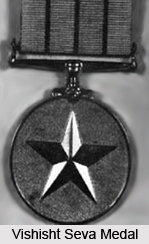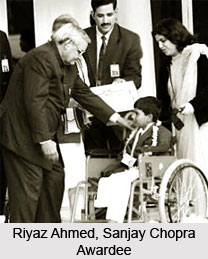 Vishisht Seva Medal which can be granted posthumously is another honour awarded by the government of India to its defence personals who have been involved in delivering good and valuable services which are relevant for Indian Armed Forces. Distinctively this is delivered for the services of higher order while it bears all other conditions which are same for other Seva Medals. Initially this award which is also named as VSM and rightly carried as post-nominal letters was established in 26th January 1960 in the name of Vishisht Sevs Medal Class III which was renamed in 27th January 1967 when the mentioning of the class was removed.
Vishisht Seva Medal which can be granted posthumously is another honour awarded by the government of India to its defence personals who have been involved in delivering good and valuable services which are relevant for Indian Armed Forces. Distinctively this is delivered for the services of higher order while it bears all other conditions which are same for other Seva Medals. Initially this award which is also named as VSM and rightly carried as post-nominal letters was established in 26th January 1960 in the name of Vishisht Sevs Medal Class III which was renamed in 27th January 1967 when the mentioning of the class was removed.
Vishisht Seva Medal which has been renamed and reshaped now carries a 35mm circular medal with a five point tar in the centre, suspended with the straight bar suspenders in the centre and named on the edge. On the reverse side it carries the State emblem which bears the name of the decoration `Vishisht Seva medal` written in Hindi. The medal is suspended with a ribbon which is 32mm wide, with three 2mm dark blue strips which is divided into 6.5yellow, 2mm dark blue, 6.5mm, yellow again, 2mm dark blue and 6.5mm yellow again. Since 1980 Vishisht Seva Medal has been considered equivalent with the Yudh Seva Medal which was recognised for exceptional services in an operational environment while Vishisht Seva Medal is recognised for non operational activities.
Thus Vishisht Seva Medal is the last non gallantry award which is awarded as a decoration to honour all the personals of Indian Armed Forces.
This article is a stub. You can enrich by adding more information to it. Send your Write Up to content@indianetzone.com






